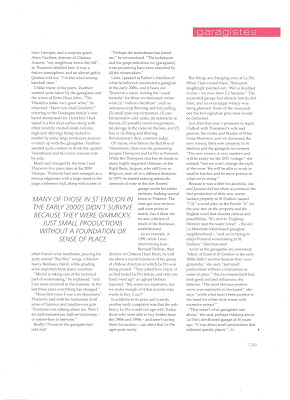But sometimes I'm faced with a Fedex-borne tsunami of bottles, which happens when wine publicists suddenly wake up one Monday morning and all individually make mental notes to themselves as they brush their teeth - "Today is the day to get out those samples!" And just when I've cleared my entry hall of the first wave of fortified boxes, here comes UPS with the second wave.
So early this week, I woke up and suddenly proclaimed as I brushed my teeth, "Today is the day to taste all those summer white samples." In fairness, I waited until my teeth were properly dirty again and absent any taint of the dreaded "minty mouth" before I started tasting, around 11. I get up at 4, so seven hours without wine is a long time.
I combined for the tasting (1) Pinot Grigios from northeast Italy, (2) Assyrtikos from Santorini, (3) Rieslings from Germany and (4) three Pacific Rim Rieslings from the Columbia Valley. Overall, the wines were all reasonably well-made, none were fantastic and a few stood out in a positive manner.
My favorite among the PGs was the 2009 Bollin Trentino, which I found to be juicy and rich, a touch bready as PGs from that area tend to be, but with more zesty and minerally than the others. Fruit flavors? Most of the Grigios had a pleasant but not snappy flavor of plum pulp.
On to the Assyrtikos. Assyrtiko is one of the most popular white grapes in Greece, and much that we drink in the U.S, comes from the isle of Santorini, although a crisper version from northern Macedonia is coming into its own. The two that appealed to me most were the 2009 Argyros, which iss big, juicy, fruity, well-balanced with good acidity and just begging to be taken to the table, and the 2010 Sigalas, which is juicy, spritzy, with a slight Sauvignon-like vegetal note. Neither was particularly complex, but both are good drinking for now.
The Rieslings - 10 of them - are all from P.J. Valkenberg, known especially for its value wines. I did find the very dry, very basic ones left something to be desired, but I've always felt that trockens faced an uphill battle against the contradictions of Riesling being at once demure and opulent. But there were five Rieslings that I though particularly stood out.
Although my wife, who did a walk-by sipping of my top 5, disagrees on this one, I was most taken by the 2009 Baron zu Knyphausen Erbacher Michelmark Rheingau Riesling Erste Lage. [Where are those damned diacritical marks in this program?] It has a lovely, clean nose that doesn't foreshadow the complexity that lay beneath, which is marked by brulee and apricot essence. There is excellent firmness, great minerality and light tannins. It is the kind of drink that shows its presence without being aggressive.
The 2009 Johannishof "Charta" Rheingau Riseling has nice stone fruit flavors with tastes of pear and apricot skins, is slightly juicy, well-balnaced and long on the palate. The 2010 Reichsgraf von Kesselstatt Piesporter Goldtropfchen Piesporter Riesling is rich and rounded with good balance, stone-fruit nectars with good minerality and light tannins. The light-alcohol (9.5%) 2010 Schloss Saarstein Riesling Kabinett reminds me of an apricot cider - juicy, tangy fruit skins, good minerality. Finally, the 2010 Graff Graacher Himmelreich Mosel Riesling Spatlese (8%) is very focused, high on the palate and having a combo of tart apples and light apricot flavors.
As for the Pacific Rim Rieslings are concerned, the brand has always provided the pleasant, basic fruitiness of American Riesling as an attractive price, but they won't take you much beyond that. They make a dry, an off-dry and a sweet.
Until next time,
Roger Morris






















